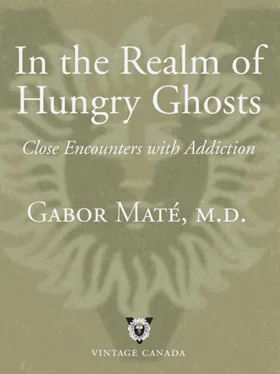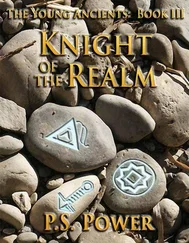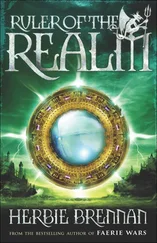A behaviour addict like me faces a similar predicament. My addictions, be it purchasing music or the perpetual juggling of several projects in my professional life, serve to fill an emptiness. The idea of “just saying no” left me with a sense of loss. The intellectual awareness that in every way it would be “good for me” to get off the compulsive merry-go-round didn’t mean much to the impatient emotional apparatus where my impulses and behaviours originated.
There are two ways of abstaining from a substance or behaviour: a positive and even joyful choice for something else that has a greater value for you or forcing yourself to stay away from something you crave and are spontaneously attracted to. This second type of abstinence, while it requires admirable fortitude and patience, can still be experienced in a negative way and contains a hidden danger. Human beings have an ingrained opposition to any sense of being forced, an automatic resistance to coercion that my friend Dr. Gordon Neufeld has called counterwill. It is triggered whenever a person feels controlled or pressured to do someone else’s bidding—and we can generate counterwill even against pressure that we put on ourselves. The effects of counterwill appear in many human interactions. Although we see it most clearly in the automatic no-saying of immature children, we have likely witnessed it in ourselves and in other adults. As in the old folksong, “Mamma Don’t Allow,” nothing evokes resistance more effectively than someone forbidding us to do something, even when the prohibition comes from ourselves. The universal refrain is “We don’ care what mamma don’t allow, we’re gonna keep on [doing whatever] anyhow….”
The frustration and resistance induced by abstinence in one area often lead to the addiction process erupting somewhere else. “You’ve got to put the plug in the jug of your drug of choice,” says Anne. “If you do that, you can work on yourself. Mind you, when I stopped drinking, I started eating like crazy and put on weight. I was also nastier to my kids than I had been when I was drinking.” As long as a person has a need to self-soothe—or from the biochemical perspective, to trigger dopamine release in their brain—one addiction may automatically substitute for another. We have noted that many people begin to binge eat, for example, when they quit smoking cigarettes. “Of course, it was still better for me to overeat than to drink,” Anne adds. “You might say that for me food was a form of harm reduction.”
Given that my pursuits were never substance based, I could easily move from one compulsion to another without ever recognizing the underlying addiction process that fuelled them all. I found myself in a much more powerful position once I began to appreciate the nature of sobriety as distinct from mere abstinence. Now I could move toward something positive, something that gives me lightness, that doesn’t feel like a duty and that allows for joy without artificial, external supports. For me personally, sobriety means being free of internal compulsion and living according to principles I believe in. Unlike abstinence, I don’t experience it as a constraint but as liberation. I don’t say I’m fully sober. I do say I recognize and value conscious awareness—another term for sobriety. It excites me more than the fool’s gold of acquisition or ego stroking that I’ve spent much time and energy pursuing in the past.
In choosing sobriety we’re not so much avoiding something harmful as envisioning ourselves living the life we value. What sobriety looks like will vary from person to person, but in all cases it has the individual, rather than the addictive compulsion, in the lead.
Ultimately, the goal of all Twelve-Step programs is not abstinence but sobriety. “What were my real needs that I thought alcohol satisfied?” says Anne. “Attachment, attunement, to be in a community, to be loved by people, to be able to give love, to have joy, to be able to be myself. AA, and what I have learned in AA, has more successfully, more adaptively fulfilled these basic needs.”
I have said that creating an external environment that can support one’s move towards conscious awareness is one essential feature of the recovery process. For many people, whether with substance addictions like alcoholism or behaviour addictions like gambling or sexual acting out, Twelve-Step programs are a crucial part of that healing environment. Their insights and methods go the very heart of the addiction process. Take, for example, the technique of an addict having a sponsor to contact whenever the addictive urge threatens to gain the upper hand—the desire to have a drink or to play cards at the casino. When the addict makes that call he recognizes his powerlessness over the compulsion, in other words, the relative weakness of the impulse-regulating parts of his cerebral cortex. Until those circuits develop some muscle of their own, the sponsor acts the regulator by talking the addict through his compulsion. Talking it out prevents acting it out.
Although not for everyone—nothing is for everyone—Twelve-Step programs provide the best available healing environment for many people. They’re not without flaws and they may even take on an addictive quality themselves. Being human institutions, they may have, here and there, become forums for gossips or for people on the make. But they have saved more lives—emotionally and probably even physically—than the medical treatments of addiction. If I don’t say more about them, it’s only for lack of personal experience. They have been well described many times from many angles—historical, psychological, practical, personal, religious and spiritual. I’ve read illuminating Twelve-Step books written from Christian, Buddhist and Taoist perspectives.
Ultimately, I didn’t choose a Twelve-Step program for myself. I have no reasons to give—it just didn’t quite feel like a fit, despite my positive experience at the one meeting I did attend. And, I admit, I have difficulty committing to attending long-term programs of any kind. For all that, I have found the Twelve-Step principles and my discussions with Twelve-Step members most helpful. I encourage anyone dealing with any addiction to investigate Twelve-Step approaches, even if they have no interest in participating in group work.

Not long ago I was confronted by an example of just how thoroughly addictive attitudes have pervaded my life and how sharply they affect other people. It’s no different for most addicts.
I am chronically and notoriously late—to work, to meetings, to family gatherings. I’ve been able to blame that propensity partly on ADD, because a deficient time sense is a well-known feature of attention deficit disorder. One Friday afternoon in mid-September of 2006 I was sitting in my car on Cortes Island, waiting for the ferry. Cortes is the home of Hollyhock, a spectacular oceanside gathering place and healing centre where many people come for programs and seminars or for rest and rejuvenation. I had just completed co-leading a five-day mind-body health workshop there. As I watched the ferry arrive, I was basking in the warm gratitude expressed by the participants, who, many of them said, had experienced transformational insights and an awakening of vitality. My head was filled with “What a good boy am I”–type thoughts. Then I opened the email on my PDA. The first was from Susan Craigie, the Portland health coordinator: a missive exploding with long-suppressed anger and frustration. For the week I’d been away, another doctor had filled in for me and she was actually on time every day. What a difference it was, Susan wrote, to have the physician show up punctually. “Kim and I didn’t have to listen to all the abuse from the upset patients in the waiting room day after day—you’re the one that’s always late, and we have to take all the crap.” She reminded me of the many promises I’d made to put an end to my tardiness and of my utter failure to keep them. “You’re doing this only because they’re junkies and you think you can get away with it. You excuse yourself by saying that you’re too busy working on your addictions book, but you’ve been doing this for years, long before that book was a glint in your eye.” The very words shook with rage as I read them on the little screen in my hand.
Читать дальше













